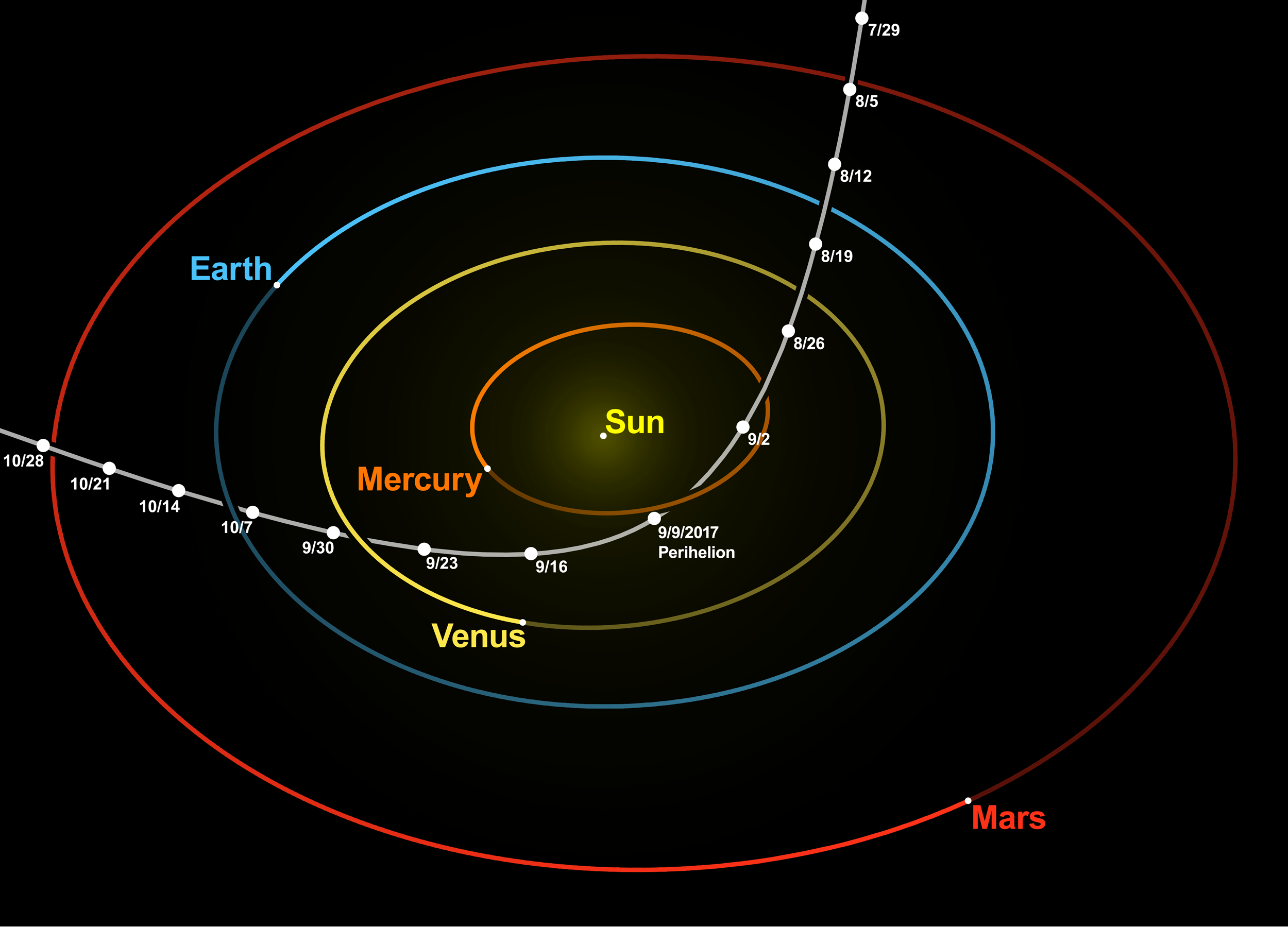
‘Oummuamua was discovered in October 2017 and is the first known interstellar small body, possibly an asteroid coming from another planetary system. The origin and nature of ‘Oumuamua remain a question. The SETI Institute began observing ‘Oumuamua with its Allen Telescope Array (ATA) soon after its discovery and has observed for more than 60 hours thus far. Breakthough Listen has also been observing the object from Greenbank, West Virginia. Thus far, no radio signals have been detected.
SETI Institute researcher Matija Cuk has theorized that it may have formed when a large planet, larger than Earth, got too close to its star and was ripped apart.
Seth Shostak, SETI Institute Senior Astronomer and Fellow and written and spoken about ‘Oumuamua for several media organizations, including NBC News and NPR.
- SETI.org: Is this Mysterious Space Rock Actually an Alien Spaceship?
- NBC News: Is this Mysterious Space Rock Actually an Alien Spaceship?
- SETI.org: SETI Talks – ‘Oumuamua, the First Known Interstellar Visitor (January 23)
- NPR: The Mystery of the ‘Oumuamua Asteroid
- Scientific American: Alien Probe or Galactic Driftwood? SETI Tunes Into ‘Oumuama
- Space.com: Interstellar Visitor Stays Silent: No Signs of Life Yet on Oumuamua
- Fox News: Interstellar Visitor Stays Silent: No Signs of Life Yet on ‘Oumuamua
- Quartz: Stephen Hawkings Search for Extraterrestrial Life Came up Short
- SF Gate: No Sign of Alien Life on Odd Asteroid from Another Solar System
- Huffpost: Scientists to Check if Bizarre Interstellar Object Could Be an Alien Spacecraft
- Inc.: UFO? Asteroid? Science Isn’t Sure What this Interstellar Visitor Is (But We May Soon Find Out)
- Joe Show: At Last Something that Actually Came from a Galaxy Far, Far Away
- News & Star: First Scans Suggest Cigar-Shaped Space Object Not an Alien Craft, Say Scientists
- Mirror: Interstellar Asteroid Dubbed “’Oumuamua” Could be ’Artifact’ from Alien Civilization, Say Scientists
- Shropshire Star: Mysterious Cigar-Shaped Object Could be Alien Spacecraft, Scientists Say
- Newser: No Signals Detected from Interstellar Visitor
- Swarajya: Ten Interesting Science Moments of 2017
- Newsweek: Is This Alien ‘Messenger’ from Another Solar System an Out-of-Control Spacecraft?
- The Conversation: No Sign of Alien Life ‘So Far’ on the Mystery Visitor from Space, but We’re Still Looking
The Pentagon recently revealed that it has investigated UFOs. $20 million was spent on the project, but the project did not provide any conclusive evidence of alien visits to Earth. It should be noted that since 1993 the government does not provide any funding for SETI research. SETI research at the SETI Institute and other organizations is funded through philanthropic donations. While neither the UFO program or SETI research has yet yielded proof of extraterrestrial intelligence, the search continues.
Seth Shostak, SETI Institute Senior Astronomer and Fellow wrote in Newsweek, “Exploration is useful in a practical sense, but also because it resonates with our natures. Learning that there is someone out there among the stars would not only be a big news story, it would be a story told forever.”
- SETI.org: Pentagon Studies and SETI
- Newsweek: Do Aliens Exist? Your Tax Dollars May Hold the Truth
- Newsweek: What Does a UFO Look Like? A Few Unexplained Sightings
- Futurism: The Pentagon Ran a Secret Program to Find UFOs. Should We Expect Aliens?
- Business Insider: An Alien Hunter Explains Why Extraterrestrial Visitors Are Unlikely – Despite the Government’s UFO Evidence
- National Geographic: What We’ve Learned from 60 Years of U.S.-Funded UFO Probes
- New York Times: UFOs: Is This All There Is?
- Inverse: Alien Hunter Reveals the Most Disturbing Part of the Pentagon’s UFO Program
- The Daily Galaxy: SETI Alien Hunter ‘Nixes’ Pentagon’s Secret UFO Program – But Believes “Advanced Intelligent Life Will Be Confirmed Within the Next 20 Years”
- Science Alert: Alien-Hunting Astronomer is Skeptical of Pentagon’s UFO ‘Evidence’
- Pasadena Now: Recently Ended Government UFO Program Raises Questions, as JPL and SETI’s Search for ET Intelligent Life Continues
- Decatur Daily: Relatively Speaking, Cost of UFO Project Not Sky High
- Who.What.Why.org: Scientists Unswayed by Discoveries from the Pentagon’s UFO Program
- How Stuff Works: What We Do – And Don’t – Know About the Pentagon’s Secret UFO Program
- News-Herald: If Aliens Landed, Would We Care?
Nathalie Cabrol, Director of the SETI Institute’s Carl Sagan Center, has written a new article available online and in the January 2018 issue of Astrobiology, “The Coevolution of Life an Environment on Mars: An Ecosystem Perspective on the Robotic Exploration of Biosignatures.” Nathalie suggests that environmental change and biological evolution are linked in a process known as coevuolution. Because of the unique environmental conditions on Mars, particularly the collapse of its atmosphere, life on Mars, if it does or did exist, would have evolved differently on Mars than it did on Earth.
- SETI.org: Life on Mars: If Past Life on Mars Existed, It Co-evolved with the Martian Environment
- Astrobiology: The Coevolution of Life an Environment on Mars: An Ecosystem Perspective on the Robotic Exploration of Biosignatures
- Phys.org: If Past Life on Mars Existed, It Co-evolved with the Martian Environment
The Quadrantid meteor shower peaked on January 3, but will continue to be seen until January 10. SETI Institute scientist Peter Jenniskens who leads the NASA sponsored Cameras for Allsky Meteor Surveillance (CAMS) project in Northern California discovered the “rock comet,” asteroid 2003 EH1 that is believed to have caused the Quadrantid meteor shower.
- Space.com: Quadrantid Meteor Shower: Odd in Several Ways
- PennLive: When is the First Meteor Shower of 2018?
- Express: When is the Quadrantid Meteor Shower 2018? When Does It Peak?
Yet another planet has been discovered by the Kepler space telescope. This time, the discovery was made by using an artificial intelligence (AI) algorithm to analyze the data from Kepler. On December 14 NASA announced the discovery an eighth planet in orbit around Kepler-90, making it the first star other than Earth’s Sun known to host eight planets. This newly identified planet, known as Kepler 90i, has an estimated surface temperature of 400º Celsius and is likely not habitable. Jeff Coughlin, SETI Institute researcher and Director of the K2 Science Office, reacted to the discovery:
Coughlin is also excited about the prospect of using artificial intelligence to assess data from future exoplanet search missions, like NASA’s TESS satellite set to launch next year. “The hits are going to keep on coming,” regarding potential exoplanet signals, he says. Having self-taught computer programs help humans slog through the data could significantly speed up the rate of scientific discovery. (Science News)
- Science News: AI Has Found an 8-Planet System Like Ours in Kepler Data
- New York Times: An Eighth Planet is Found Orbiting a Distant Star, with AI’s Help
The Cassini space probe was launched in 1997 and spent 13 years in orbit around Saturn. Between April and December of 2017 Cassini’s Grand Finale phase completed a series of dives between Saturn and its rings before the mission’s end, a dive into Saturn’s atmosphere. Researchers continue to analyze the data from Cassini’s Grand Finale.
SETI Institute scientist Paul Estrada is co-author that suggests the rings around Saturn are quite young in planetary terms, perhaps only a few hundred million years old. He is cited in a recent article, along with SETI Institute scientist Matija Cuk:
Paul Estrada of the SETI Institute in Mountain View, Calif., one of Kempf’s coauthors, thinks ring formation might not be a one-off event. Instead, Saturn might go through cycles of moons and rings. In 2016, Matija Ćuk, also of the SETI Institute, and colleagues calculated that if a former outermost moon of Saturn had moved inward a bit, that motion could have destabilized the whole moon system and forced the orbs into orbits where Saturn’s gravity would have shredded them into rings. Those rings could accrete into new moons and eventually go through the whole process again. “It could have happened many times,” Estrada says. (Science News)
SETI Institute scientist Matthew Tiscareno who has spent most of his career studying Cassini is quoted in another recent article:
Tiscareno says there is a discrepancy between Cassini's Grand Finale measurements of gravitational effects of the rings' mass and a decade-plus of the spacecraft tracking the orbits of the planet's moons. "Until that discrepancy is ironed out, the Grand Finale gravity measurement for the mass of the rings cannot be considered to be final." (Axios)
- Science News: Saturn’s Rings are Surprisingly Young and May Be from Shredded Moons
- Axios: Something Wondrous
- Space.com: Farewell Cassini: Saturn Spacecraft’s Crash Is Top Spaceflight Story of 2017
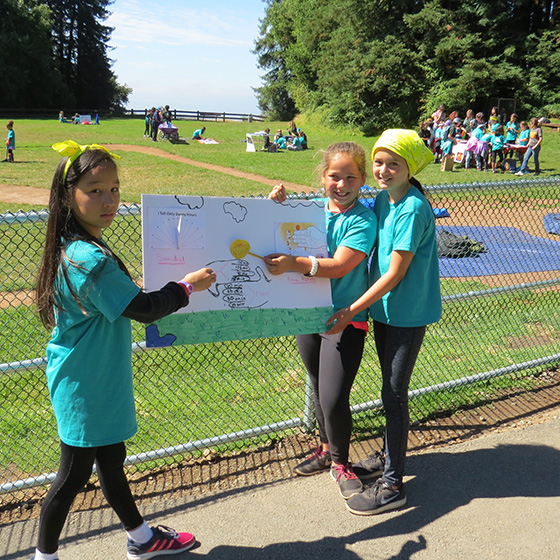 Reaching for the Stars: NASA Science for Girl Scouts
Reaching for the Stars: NASA Science for Girl ScoutsReaching for the Stars: NASA Science for Girl Scouts is a five-year program funded by NASA’s Science Mission Directorate and led by the SETI Institute. The SETI Institute is working in collaboration with the Girl Scouts of Northern California, the Astronomy Society of the Pacific, the University of Arizona and ARIES Scientific to develop space science badges Girl Scouts grade level.
Silvia Acevedo is the Chief Executive Officer of Girl Scouts of the USA, a lifelong Girl Scout. She has worked at NASA Jet Propulsion Laboratory and was involved in Voyager’s flyby of Jupiter. Silvia credits the Girl Scouts with helping to prepare her for her future career and achievements and is committed to providing STEM education and resources to as many girls as possible through the Girl Scouts.
- SETI.org: Reaching for the Stars – NASA Science for Girl Scouts
- The 74: How Girl Scouts Helped Astronaut Reach for the Stars – And Is Going All In on STEM Education for Girls
- Sky’s Up: Changing Our Mindset on Outreach
The application process for the SETI Institute’s Research Experience for Undergraduates program (REU) is open and the deadline for applications is February 1, 2018.
The SETI Institute’s REU program is open to current sophomore and junior undergraduate students who are U.S. citizens or permanent residents. Participants will receive a stipend of $5,000 and be provided with dormitory housing.
- SETI.org: Applications to the Research Experience for Undergraduates at the SETI Institute are Now Open!
- SpaceRef: Applications to the Research Experience for Undergraduates at the SETI Institute are Now Open
The contributions of women in science has been an important conversation and that is continuing. At the SETI Institute, we’re proud of the women leading scientific research in all six of our research thrusts: Astronomy & Astrophysics, Exoplanets, Planetary Exploration, Climate and Geoscience, Astrobiology and, of course, SETI. Jill Tarter, who is a co-founder of the SETI Institute, sits on our Board of Trustees and holds the Bernard M. Oliver Chair for SETI has been a pioneer in SETI research, a champion of women in science and mentor and role model for young people who will one day be pioneers in science themselves.
Jill is featured in the most recent issue of Sky’s Up Magazine which celebrates women in astronomy.
“I think that the thing we need to emphasize to young people today is that what they need to do is find something that they love and get very, very, very good at doing it and then be willing to use those skills not in just doing the same thing over and over again, but in doing something new,” Tarter said. “The jobs of tomorrow many of them don’t even exist today. We couldn’t imagine them, we couldn’t write down a job description or a set of criteria for the jobs of the future, but if you have good skills you can transition and you can in fact prepare yourself now for doing something.” (Sky’s Up)
- Sky’s Up: SETI A Lifelong Calling for Jill Tarter
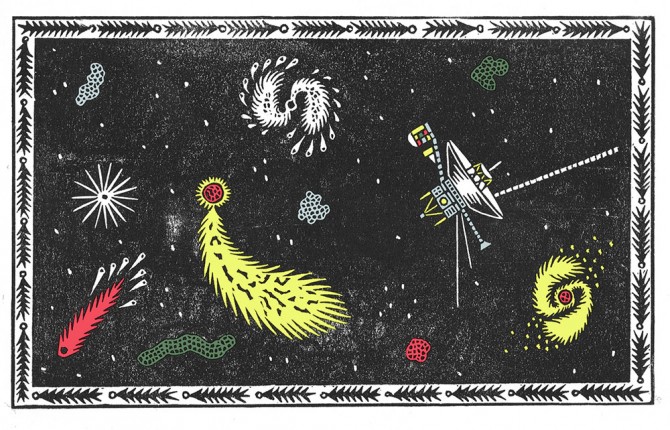 WeTransfer Celebrates the Golden Record
WeTransfer Celebrates the Golden RecordIn honor of the 40th anniversary of the Golden Record, WeTransfer has launched a web exhibit featuring contributions from artists, musicians, photographers, authors and scientists. Seth Shostak, SETI Institute Senior Astronomer and Fellow is among the contributors. According to its press release, WeTransfer’s intent is to “relay a message of goodwill and encourage future exploration.” To that end, WeTransfer is making a $10,000 grant to each of three institutions: The Carl Sagan Institute at Cornell University, Astronomers without Borders and the SETI Institute. Further, a ‘zine of the project is available for $15, with 100% of the revenues going to the three nonprofits.
- Cornell Chronicle: Web Exhibit Celebrates Golden Record, Celebrates Scientific Discovery
- PR Newswire: WeTransfer Announces a Message from Earth: An Online Exhibition with Newly Commissioned Work, Inspired by the Voyager Golden Record
- The Drum: WeTransfer Collaborates with More than 40 Artists to Introduce an Interactive Exhibition
- Boing Boing: Magnificent Online Experience Inspired by the Voyager Golden Record Supports SETI, Carl Sagan Institute, Astronomers Without Borders
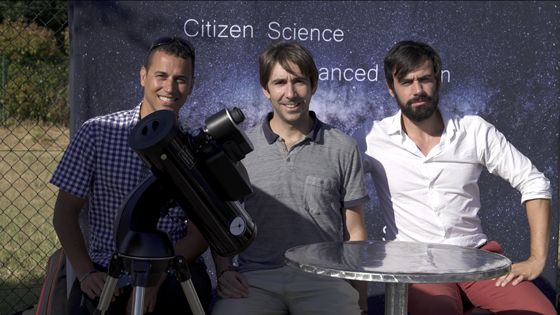 Unistellar Telescope at the Consumer Electronics Show
Unistellar Telescope at the Consumer Electronics ShowThe Unistellar eVscope will be featured at this year’s Consumer Electronics (CES) show in Las Vegas. After a successful Kickstarter campaign in 2017, raising $2.2M, Unistellar will receive the 2018 Innovation Award at CES.
The SETI Institute and Unistellar are partnering to collaborate on the eVscope’s Campaign Mode, allowing citizen scientists to send image data to the SETI Institute, allowing scientists to access data for specific objects from around the world.
- SETI.org: SETI Institute-Unistellar Partnership Promises to Revolutionize Amateur Astronomy
- Forbes: CES 2018 Means Scrabble Playing Robots, Connected Microscopes, Sensors and Smart Fabric
 Tabby’s Star
Tabby’s StarKIC 8462852, more familiarly known as Tabby’s Star, is characterized by its odd and unexplained periodic dimming, sometimes by as much as 20% or more. There’s no known pattern to this behavior and so it cannot be explained by a transiting planet. There are many theories, but as yet, no answers. The SETI Institute’s Allen Telescope Array (ATA) has observed Tabby’s Star from time-to-time, but has not yet identified any signals that might come from an “alien megastructure.”
SETI Institute Senior Astronomer Seth Shostak writes in Sky’s Up Magazine, “It sounds as if the neighborhood of Tabby’s star is clogged with dust. Even so, it’s still hard to understand that 22 percent brightness drop. But hey, if there were no mysteries in the cosmos, why would anyone care about astronomy?”
- SETI.org: Has the Mystery of Tabby’s Star Finally Been Solved?
- Sky’s Up: Tabby’s Star Aims to Misbehave
Seth Shostak, SETI Institute Senior Astronomer and Fellow, and host of the Big Picture Scienceradio program, participated in a Reddit Ask Me Anything event on December 12. Questions covered a broad range of topics including putting a facility on the far side of the moon, ‘Oumuamua, Laser SETI and more.
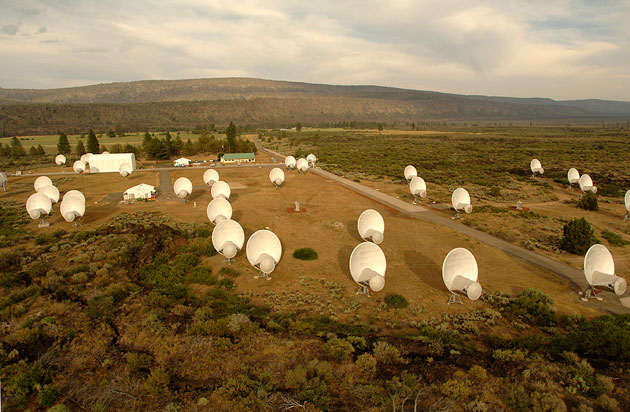 Extraterrestrial Mashup on StarTalk
Extraterrestrial Mashup on StarTalkThe SETI Institute’s Jill Tarter and Seth Shostak are featured in the December 22 episode of StarTalk. David Grinspoon, who serves on the SETI Institute’s Science Advisory Board is also included in this episode.
- StarTalk: Extraterrestrial Mashup
SETI Institute is a world-class center of scientific research. But that’s not all we do. In addition to the Carl Sagan Center for Research, our Center for Education and Center for Outreach work to share knowledge and learning with all humanity. The Center for Education promotes STEM education that teaches and excites children, young adults and educators, while the Center for Outreach engages with the general public through a variety of digital, print and in-person initiatives.
Download the whole November 2017 activity report.
Last week’s encore presentation of DIY Diagnosis explored whether we need physicians to tell us what ails us. This week, also an encore, Weather Vain, delves into meteorology, weather forecasting and even wonders about geoengineering.
Last week SETI Institute President and CEO sat down with Eliot Gillum for an update on Laser SETI.
All past Facebook Live videos can be seen on the SETI Institute’s Facebook page at https://www.facebook.com/SETIInstitute/.
- American Astronomical Society: January 8-12, Washington, DC SETI Institute scientists and staff will participate.
- Consumer Electronics Show: January 9-12, Las Vegas, NV Franck Marchis will participate
- Long Now Foundation: January 16, San Francisco, CA Franck Marchis will present a talk: Another Pale Blue Dot: Inside SETI Institute’s Search for Exoplanets
- SETI Talks: January 23, Menlo Park, CA SETI Institute Researcher Matija Cuk and Meg Scwamb of the Gemini Observatory in Hawai’i will discuss ‘Oumuamua
- Rencontre du Vietnam on Exoplanetary Science: February 25 – March 2, Quy Nohn, Vietnam Franck Marchis will present





